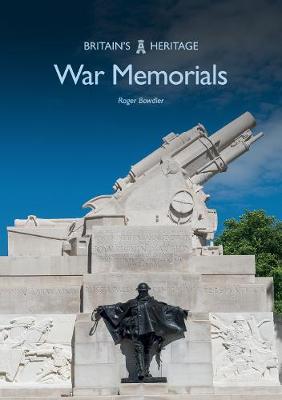Britain's Heritage
2 total works
Churchyards are everywhere, numbered in their thousands. Some have ancient yew trees while others have intriguing structures like parish stocks, charnel houses and medieval crosses. And beneath the grass lie untold generations of past parishioners, lying in the shadow of the church until the Day of Judgment. There is much to discover in churchyards - one of England's greatest creations.
Memorials range from the grandest mausolea to the humblest of stones and wooden markers. From the eighteenth century outdoor memorials started to become the preferred option, encouraged by the Georgian classical revival. A wider range of society sought to be remembered using tombstones. Headstones sported imagery and epitaphs and many of these form the earliest tangible evidence of family history. Craftsmanship created beautiful imagery, and local materials and customs led to memorials distinctive to the places where they are found.
This book is part of the Britain's Heritage series, which provides definitive introductions to the riches of Britain's past, and is the perfect way to get acquainted with churchyards in all their variety.
Memorials range from the grandest mausolea to the humblest of stones and wooden markers. From the eighteenth century outdoor memorials started to become the preferred option, encouraged by the Georgian classical revival. A wider range of society sought to be remembered using tombstones. Headstones sported imagery and epitaphs and many of these form the earliest tangible evidence of family history. Craftsmanship created beautiful imagery, and local materials and customs led to memorials distinctive to the places where they are found.
This book is part of the Britain's Heritage series, which provides definitive introductions to the riches of Britain's past, and is the perfect way to get acquainted with churchyards in all their variety.
The last veteran of the First World War has long since died, and those of the Second are getting ever scarcer, but public interest in war memorials continues unabated. The tragic impact of world events on local communities over the past century has demanded memorials to keep the dead in mind, and pay tribute to their sacrifice.
Communities have been raising memorials to their war dead since the Middle Ages but the largest number were raised as a result of the First World War. War memorials were erected in their thousands after 1918: bronze Tommies and stone wayside crosses became commonplace, and can attain high levels of artistic refinement. Britain's great cities raised magnificent monuments, as did regiments, railway companies, schools and private families. Among them are truly outstanding works of monumental art by sculptors such as Charles Sargeant Jagger, Gilbert Ledward and Eric Gill. Others took practical form: a swimming pool or a village hall, or a stained glass window. Their range and variety are huge, and their number is uncountable: no agreed tally exists.
This book is part of the Britain's Heritage series, which provides definitive introductions to the riches of Britain's past, and is the perfect way to get acquainted with war memorials in all their variety.
Communities have been raising memorials to their war dead since the Middle Ages but the largest number were raised as a result of the First World War. War memorials were erected in their thousands after 1918: bronze Tommies and stone wayside crosses became commonplace, and can attain high levels of artistic refinement. Britain's great cities raised magnificent monuments, as did regiments, railway companies, schools and private families. Among them are truly outstanding works of monumental art by sculptors such as Charles Sargeant Jagger, Gilbert Ledward and Eric Gill. Others took practical form: a swimming pool or a village hall, or a stained glass window. Their range and variety are huge, and their number is uncountable: no agreed tally exists.
This book is part of the Britain's Heritage series, which provides definitive introductions to the riches of Britain's past, and is the perfect way to get acquainted with war memorials in all their variety.

